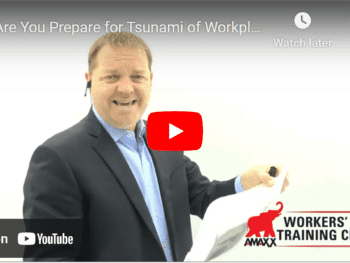In a recent audit of workers compensation claims, the auditor was dismayed to find the self-insured had a hodgepodge of claim systems to handle claims. These are often referred to as RMIS – risk management information systems. The self-insured was using a 20-year-old version of a computer claim management system with numerous patches, upgrades and revisions to it over the years. The claim management system had broken down numerous times (the claim audit was delayed due to one of the breakdowns). Litigation management was kept on a separate computer system. While documents were being scanned into the claim files, a parallel paper file was kept on each claim due to the inadequacies and failures of the claim management system.
When the self-insured was asked to provide some basic reports – closings for each month, total new claims per month, total open claims in the office for the month, etc., the manager was unable to run the reports. A request to the IT Department needed to be made in order to obtain basic claims office management data. Due to the inadequacies of the claims management system, the claims manager could not run his own analytical reports.
Click Link to Access Free PDF Download
“The 5Cs to Taking a Bulletproof Injured Worker Recorded Statement”
The self-insured’s explanation of why they had such an outdated claims management system — COST. The self-insured felt it cost too much to obtain a better claims management system. The self-insured knew the deficiencies of their claim management system was causing the claims office to waste a lot of time, but had not quantified the cost.
The self-insured was spending more each month with their vendor to keep the old system going than it would cost to pay for a new claims management system. To use an analogy, it was as if the self-insured was spending $500 every month to keep an old car going, when they could have been spending $500 each month paying for a new car.
The risk manager for the self-insured was at an extreme disadvantage in obtaining the data needed to manage properly their claims and their exposures. Without information, maintaining claim quality and analyzing progress or declines in the performance of the claims office was, as the claims manager said. “flying by the seat of my pants.”
Both the risk manager and the claim manager were making judgments and decisions based on their gut, rather than verifiable information. However, they both agreed they needed a better claims management system and were hopeful that the next revision of their current claims management system was going to make it better (a new transmission in their 20-year-old car).
If the next revision of the 20-year-old claims management system is unsuccessful or incomplete, it is seriously recommended this self-insured look at purchasing a modern claims management system. While the process will be scary to them due to their concerns of making a poor choice, the selection of a claims management system designed to meet their needs can be done. However, as we advise when beginning a workers compensation cost reduction analysis – your biggest step is to just START – pick one thing and GO.
To find a claim management system that will provide for their needs, this self-insured should consider:
1. Purchasing or leasing from a vendor (their IT department does not have the resources to develop their own).
2. Contacting other large self-insureds (RIMS is a good place to start) to see what claims management systems they are using and how they would rate those systems.
3. After identifying several options, obtaining detailed information from the vendors on how the claims management system is integrated with medical case management and litigation management.
4. Vendors who have experience at conversion of data from their old system to the new claims management system.
Other facets this self-insured should consider:
5. Their claim needs – entering file notes, creating diaries, digital copies of documents, processing payments, tracking reserves, writing letters, state form filings, litigation management, medical management, etc.
6. Having a system that is easy to input data, easy to navigate and simple for new employees to learn.
7. A system that responds immediately – a five second delay to change pages will add up to an extremely large amount of wasted time over millions of page changes during the life of the system
8. A system that encrypts sensitive information like social security numbers, passwords and medical information.
9. A system that can run sophisticated analytics, both canned reports and ad-hoc reports for data mining.
10. A system that keeps the reporting database separate from the transactional database (to allow for data reports without impacting system performance). (WCxKit)
11 A system with a disaster recovery plan with a back-up of all data.
Summary
In moving from an old claims management system to a new system, it is important to evaluate your company’s needs, the qualifications of the vendor and the capabilities of the new claims management system. A quality claims management system will improve risk management’s effectiveness, improve claim management and save time for the claims staff while reducing overall operation cost.
In moving from an old claims management system to a new system, it is important to evaluate your company’s needs, the qualifications of the vendor and the capabilities of the new claims management system. A quality claims management system will improve risk management’s effectiveness, improve claim management and save time for the claims staff while reducing overall operation cost.
Author Rebecca Shafer, JD, President of Amaxx Risks Solutions, Inc. is a national expert in the field of workers compensation. She is a writer, speaker and website publisher. She works with employers to reduce their workers compensation costs. Her clients include airlines, healthcare, manufacturing, printing/publishing, pharmaceuticals, retail, hospitality and manufacturing. Contact: [email protected] or 860-553-6604.
Join WC Group: http://www.linkedin.com/groups?homeNewMember=&gid=1922050/
Join WC Group: http://www.linkedin.com/groups?homeNewMember=&gid=1922050/
FREE IQ Test: http://www.workerscompkit.com/intro/
Do not use this information without independent verification. All state laws vary. You should consult with your insurance broker or agent about workers’ comp issues.
Do not use this information without independent verification. All state laws vary. You should consult with your insurance broker or agent about workers’ comp issues.
©2010 Amaxx Risk Solutions, Inc. All rights reserved under International Copyright Law.










